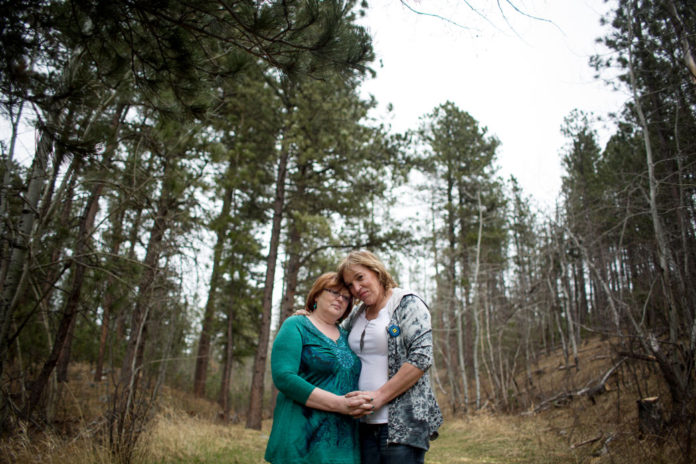
The American Rescue Plan Act’s (ARPA) $1.88 trillion in investments to combat the COVID-19 pandemic not only represents a comprehensive pandemic response but also one of the most significant measures to address poverty in U.S. history. As detailed in a previous CAP column, the ARPA is particularly important for LGBTQ communities of color, low-income households, and people with disabilities—all of whom have been among the hardest hit by the pandemic. Even prior to the pandemic, LGBTQ people, particularly transgender people and LGBTQ people of color, experienced disproportionate levels of poverty. According to the Williams Institute, before the pandemic, more than 1 in 5 LGBT adults in the United States lived in poverty, compared with 16 percent of cisgender straight adults. Nearly 30 percent of cisgender bisexual women and transgender people lived in poverty, and poverty rates for Black and Asian LGBT adults are higher than those of their cisgender straight counterparts. The pandemic has only made those numbers worse.
This column illustrates several important ways that the ARPA’s provisions can benefit LGBTQ people and address poverty in the community.
Some of the many benefits of the ARPA
Direct cash payments. Millions of people have already received direct payments under the ARPA. Low- and middle-income households will receive $1,400 per person. Single filers with incomes between $75,000 and $80,000; heads of household with incomes between $112,500 and $120,000; and married couples with incomes between $150,000 and $160,000 will also receive some direct payments.
Extended unemployment benefits. The ARPA extends both emergency unemployment insurance programs and the $300 weekly supplement to state unemployment benefits through September 6, 2021. According to the Movement Advancement Project, 47 percent of LGBTQ households experienced employment loss, compared with 32 percent of non-LGBTQ households.
Increased earned income tax credit. The ARPA nearly triples the maximum tax credit benefit for low-wage workers not raising children at home, from $543 to $1,502. It also reduces the minimum age of eligibility to claim the credit from 25 to 19 and eliminates the upper age limit, expanding eligibility to childless workers ages 65 and above. Workers whose earnings decreased because of the pandemic won’t see a reduction in their benefit amount, which will help many of the estimated 56 percent of LGBTQ households who saw wages or hours reduced since the pandemic began.
Unprecedented child tax credit expansion. The ARPA will cut child poverty in half. The law ensures that all low- and middle-income families receive the full benefit and raises the benefit from $2,000 per child under the age of 17 to $3,600 per child under the age of 6 and $3,000 per child ages 6 to 17. The money will also be distributed in periodic installments beginning as early as July 2021, so families won’t have to wait until tax time to receive support that they need now. According to the U.S. Census Bureau, 12 percent of unmarried same-sex couples and 19 percent of married same-sex couples are raising children. And while the census does not collect data on single LGBTQ people or LGBTQ people who do not live with a same-sex partner, the Williams Institute estimates that 11 percent of cisgender gay men, 30 percent of cisgender lesbian women, 30 percent of cisgender bisexual men, 45 percent of cisgender bisexual women, and 33 percent of transgender people have a child or children in their households.
Efforts to combat hunger. The ARPA extends the 15 percent increase in Supplemental Nutrition Assistance Program (SNAP) benefits through September 30, 2021. According to a nationally representative June 2020 survey from CAP and NORC at the University of Chicago, 25 percent of LGBTQ people and their families—including 30 percent of transgender people, 32 percent of LGBTQ people of color, and 42 percent of disabled LGBTQ people—reported receiving SNAP benefits.
Assistance to keep people in their homes. The ARPA provides $21.6 billion in emergency rental assistance and $5 billion in emergency housing vouchers for people experiencing homelessness or who are at risk of homelessness. It also provides nearly $10 billion in assistance to homeowners who are struggling to keep their home. According to the Williams Institute, 20 percent of LGBT respondents and 26 percent of LGBT respondents of color, compared with 12 percent of non-LGBT respondents, reported having trouble paying their rent or mortgage between August and December 2020. The ARPA also provides $20 million to enforce nondiscrimination protections, which will help protect LGBTQ people from discrimination in housing.
Improved access to health care. CAP’s 2021 survey found that nearly 1 in 3 LGBTQ people, including more than half of transgender people, postponed or avoided needed medical care due to cost. LGBTQ people are twice as likely to be uninsured than non-LGBTQ people. The ARPA provides $35 billion in subsidy increases for people who purchase insurance on the Affordable Care Act (ACA) marketplaces and $7.6 billion to community health centers, including many LGBTQ-serving health centers. It also provides incentives for states to expand Medicaid. In states that have expanded Medicaid, just 8 percent of LGBTQ adults are uninsured, compared with 20 percent in states that have not expanded Medicaid. The ARPA also provides $7.5 billion in funding to the Centers for Disease Control and Prevention for vaccine distribution.
Investments in mental health care. The ARPA includes $3.88 billion to expand investments in mental health care. According to the Kaiser Family Foundation, 3 in 4 LGBT people reported that worry and stress from the pandemic has had a negative impact on their mental health. CAP’s survey found that more than half of LGBTQ people reported that discrimination negatively affected their psychological well-being to a moderate or significant degree in the year prior. And more than 60 percent of LGBTQ people—including more than 70 percent of transgender people—felt down, depressed, or hopeless because of the pandemic,.
Protection for LGBTQ workers. Complaints filed with the U.S. Equal Employment Opportunity Commission alleging discrimination on the basis of sexual orientation or gender identity have risen each year since 2013. CAP’s survey found that more than 1 in 3 LGBTQ people who experienced discrimination in the year prior had that discrimination occur in the workplace. The ARPA invests $200 million in worker protection enforcement.
Conclusion
The American Rescue Plan Act will provide critical relief to LGBTQ people and their families. However, additional investment is needed to counter the effects of stigma and discrimination that contribute to higher poverty rates for LGBTQ people. LGBTQ people also face lower educational attainment, higher rates of unemployment, and overrepresentation in low-wage jobs—and these disparities are more pronounced for transgender people, bisexual women, and people of color. Raising the minimum wage, improving access to education and skills training that prepares people for available opportunities, and ensuring access to supports that allow LGBTQ families to meet basic needs are needed to address economic insecurity. Furthermore, the federal government must collect sexual orientation and gender identity data to assess the needs of the community and the success of policies in meeting those needs.
While the ARPA is a significant step in addressing the concerns of LGBTQ people, their families, and their communities, it is incumbent upon policymakers at the federal, state, and local levels to implement strategies targeted toward those who are most vulnerable.
Sharita Gruberg is the vice president of the LGBTQ Research and Communications Project at the Center for American Progress.








